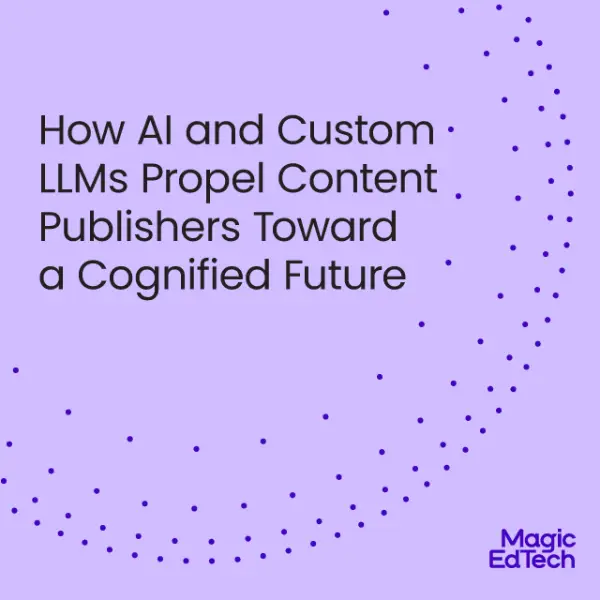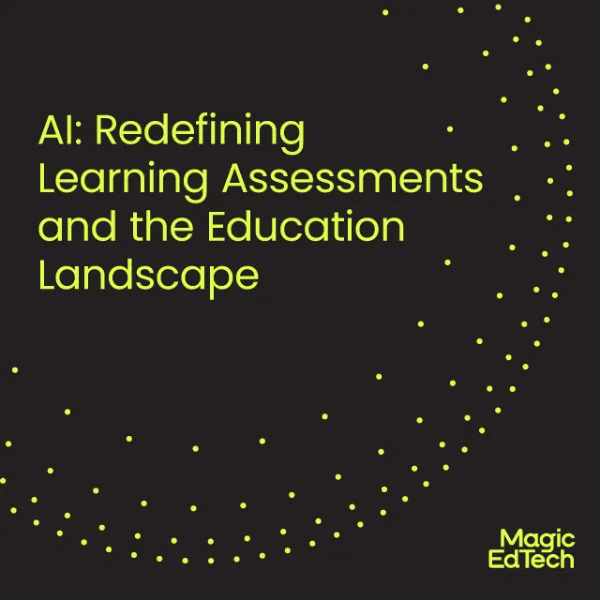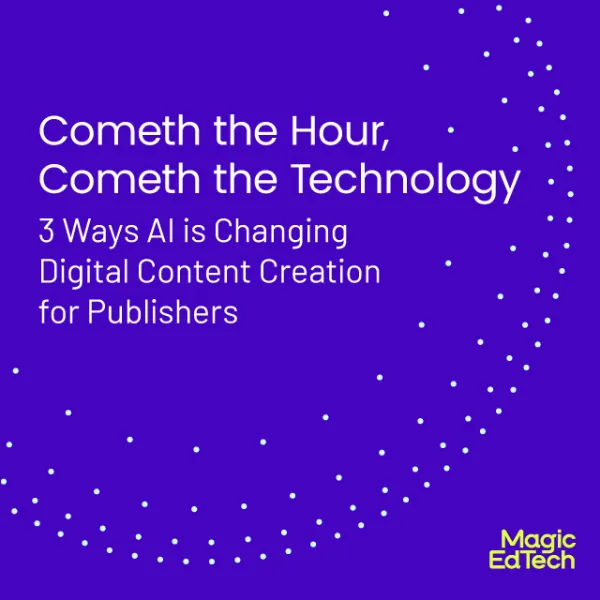Lighting Up Individual Learning Paths: A Guide for Publishers
- 3 November, 2023
- Reading Time: 4 mins
The quest to provide tailored learning experiences has never been more critical. Luckily, personalized learning is no longer a far-off dream; it’s a reality that is reshaping the way students access and interact with educational content. For publishers, this presents a remarkable opportunity to use Artificial Intelligence (AI) to create individual learning paths.
Students come from diverse backgrounds, have varying levels of knowledge, and learn at their unique paces. From concept to execution, we pen down some crucial steps to develop personalized learning solutions that can truly make a difference.
Before we begin, you must know that creating individual learning paths with AI is an ongoing and evolving process. It involves a close partnership between educational publishers, AI developers, educators, and students. The effectiveness of the system depends on the quality of data, the AI models, and the ability to adapt to the evolving needs of learners.
It all begins with data
Publishers often have access to a wealth of educational content, including textbooks, e-books, interactive modules, and more. Each of these can serve as important data points on the learner journey. For example, 35% of science textbook readers in a class abandon a book within the first 15 minutes.
The first step to individualizing learning paths is to digitize this content and create structured datasets. Think of it as building a library, where every book, chapter, and page is tagged with relevant metadata. Organize educational content into manageable units, tagging them with relevant metadata such as topics, difficulty levels, and learning objectives.
AI Model Development
Next up, we bring in the tech wizard – AI. AI developers can create machine learning models that can analyze and process the structured content data. These models could use Natural Language Processing (NLP) to understand the content deeply. For instance, an AI model can identify the key concepts in a physics textbook or recognize the different grammatical structures in a language learning resource.
Personalization Algorithms for Tailored Learning Journeys
The real magic happens when we create personalization algorithms. These algorithms are like the GPS for learning; they understand where each student is, where they want to go, and the best route to get there. Consider this: A high school student wants to study physics. The AI recognizes their proficiency level and learning style, suggesting a mix of interactive simulations, videos, and text-based resources. But what if that same student has a passion for astronomy? The AI adapts, steering the student towards astronomy-focused content within the physics curriculum. It’s like having a personal tutor who knows you inside out.
Data Privacy and Security
Of course, with great power comes great responsibility. It’s crucial to ensure that student data is protected and used ethically. Data should be anonymized and secured to meet legal and ethical standards. After all, trust is a fundamental part of any learning experience.
User Interfaces: Learning with Ease
Now, let’s talk about user interfaces. Students and teachers need a space where they can interact with this AI-powered platform. Think of it as the bridge connecting the human and the machine. The interface should be intuitive, user-friendly, and accessible to all.
The Student Profile
Once the platform is up and running, it’s time to collect student data. The AI learns from how students interact with the platform, adapting and refining its recommendations over time. This isn’t Big Brother watching; it’s a supportive tutor who knows your learning style better with each interaction.
Adaptive Recommendations
Imagine this: A middle school student struggles with math. They receive personalized recommendations for math resources, tailored to their current knowledge and learning pace. As they progress, the recommendations evolve. If they master multiplication, the AI shifts gears and introduces division.
A Watchful Eye
Teachers play a pivotal role. They monitor student progress and offer guidance and assessments. AI can be a powerful assistant, but it’s the teacher who provides the personal touch and emotional support that only a human can.
Always Evolving
The learning path is a dynamic journey. The AI constantly learns from student interactions, and publishers keep the content fresh and up-to-date. It’s an ecosystem that evolves with the changing needs of learners.
Making It Accessible
Education should be accessible to all. The platform should be designed to cater to the needs of students with different learning styles and abilities. No one should be left behind.
Getting Institutions on Board
Collaborate with educational institutions to integrate the platform into the curriculum. It’s about making sure that what students learn aligns with academic standards and provides value in the classroom.
Regulations and Compliance
Education is subject to various regulations. Make sure your platform complies with educational standards in the regions you serve. It’s essential to navigate the educational landscape smoothly.
Support and Training
To get the most out of the platform, students and teachers need support and training. They should know how to navigate this new world effectively.
Feedback Is Key
Remember, it’s a journey. Maintain an ongoing feedback loop with teachers, students, and other stakeholders to gather input and make continuous improvements.
As educational publishers, the path to developing individualized learning experiences is paved with the promise of revolutionizing education. The power of AI to understand each learner, tailor content to their needs, and support their unique progress cannot be understated. It’s a journey that holds the potential to enhance engagement, improve learning outcomes, and ensure that no student is left behind. By integrating AI-driven recommendations, personalization, and adaptive learning, publishers can contribute to the transformation of education. So, let’s embrace the future, empower learners with personalized content, and embark on a collaborative endeavor to shape the next generation of education. The opportunity is immense, and the time to embark on this transformative journey is now.





